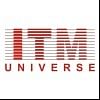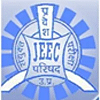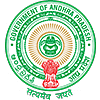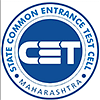Table of Contents
The syllabus for the BEEE is given below and candidates can refer to BEEE 2023 Reference Books to grasp all the subjects. The syllabus for BEEE Exam will be based on 4 main subjects Mathematics, Physics, Chemistry, and English.
Note: Only biology students will be having questions based on the biology subject.
Biology Syllabus
Cell biology:
-
Cell theory and cells as the unit of life.
-
Basic concepts of biomolecules – Proteins, Carbohydrates, Lipids, Nucleic acids.
-
Tools and techniques for cell studies - use of microscope and calibration (microscopy), elements of the microscope. Biomembranes - transport mechanism, cellular respiration.
-
Cell organelles - structure and functions.
-
Discovery and structure of DNA, processes of replication, transcription, genetic code and translation.
-
Principles of the basic techniques in molecular biology.
-
Enzymes- catalysis, kinetics, activation energy, competitive and non-competitive inhibition.
Genetics and Evolution:
-
Fundamentals of genetics and evolution.
-
Evidence and theories of organic evolution.
-
Organization of the heredity material in chromosomes.
-
Equational division. Reduction division.
-
Mitosis and meiosis compared and contrasted.
-
The significance of meiosis. Mendel's laws of inheritance.
-
Discovery of linkage, sex-linked inheritance.
-
Crossing-over, stage at which crossing-over occurs.
-
Neurospora genetics. Mutation - discovery, types of Mutation and Mutations in diploids.
-
The role of mutations in evolution.
-
Elaboration of Mendel's laws of inheritance.
-
Monohybrid or Dihybrid crosses.
-
Human genetics - human chromosomes, sex determination, sex-linked inheritance.
Ecology:
-
Physical and biological factors influencing organisms.
-
Food chains, pyramids of numbers and biomass.
-
Biological equilibrium.
-
Interspecific associations.
-
Biodiversity.
-
Flora and fauna.
-
Basics of microbial systems, Ecosystems.
Humans and Environment:
-
Soil, rainfall, and temperature with reference to natural resources.
-
Our natural resources - their uses and abuses.
-
Environmental pollution and preventive measures.
-
Biodiversity and Conservation
Biotechnology:
-
Principles of recombinant DNA technology.
-
Applications of biotechnology.
Digestive System:
-
Modes of nutrition.
-
Different vitamin compounds and their deficiencies.
-
The structure of alimentary canal and associated glands, digestive enzymes and gastrointestinal hormones.
-
Absorption of products of digestion, peristalsis, balanced diet.
Respiratory System:
-
Gaseous exchange in animals.
-
Structure of respiratory organs, mechanism of breathing, gaseous transport, tissue respiration
Circulatory System:
-
Open and closed systems. Functions of blood and 1ymph.
-
Microscopic structure of blood and blood vessels.
-
Structures and working of the heart.
-
Distribution of arteries and veins.
-
Circulation of blood coagulation.
-
Blood groups
Excretory System:
-
Elimination of nitrogenous waste.
-
Osmoconformers and osmoregulation.
-
Structure and function of kidney tubules.
-
The arrangement of excretory organs.
Nervous System:
-
General account of the brain, spinal cord, and nerves.
-
Reflex actions (simple and conditioned).
-
Sense organs (eye and ear).
Reproductive System:
-
Sexual and asexual reproduction.
-
General arrangement and functions of reproductive organs.
-
Developmental Biology - Basic features of development in animals.
-
Types of eggs, fertilization, cleavage, blastula.
-
Stem cells- definition, types, uses advantages and disadvantages, induced pluripotent stem cells.
-
Different hormones and their roles.
-
The Diversity of Animal Life — Principles of classification, binomial nomenclature.
-
General classification of animal phyla up to classes (invertebrates) and up to sub-classes / order (vertebrates), General characters of fishes, amphibians, reptiles, birds, and mammals.
Immunology:
- Basics of immune mechanisms and diseases- active and passive immunity, T and B cell responses, antigen presentation, principles of vaccination, monoclonal antibodies and their uses, Immunology of AIDS
Biology of Plant Systems:
-
Anatomy and Physiology of Plants - Meristems.
-
Plant growth and development.
-
Internal and external regulators of growth and development in the plant.
-
Plant reproduction.
-
The internal structure of root, stem, secondary growth and leaves.
-
Xylem and Phloem - their cell elements and functions.
-
The internal structure of dicot and monocot leaves.
-
Photosynthesis - history, importance, factors and mechanism, stomatal mechanism, transpiration, and respiration.
-
Comparative study of dicot and monocot anatomy.
-
Absorption and cell-water relations, transport of water and minerals, Tropic and turgor movements.
-
The significance of life-cycles with special reference to the alternation of generations as exemplified in Funaria, Selaginella and Pinus (no structural details).
-
Plant hormones.
Systematics:
-
Principles of classical and new systematics.
-
Binomial nomenclature.
-
Familiarity with tax.
-
Plant breeding and tissue culture.
Chemistry Syllabus
Physical Chemistry
Measurements in Chemistry:
- SI units for fundamental quantities, significant figures in calculations.
Mole concept:
-
Avogadro number and mole concept, molar masses, mole fraction, molarity, molality, percent composition, stoichiometry.
-
Equivalent weight and normality.
-
Calculations based on mole concept and stoichiometry of different reactions.
-
Oxidation-reduction reactions.
Gaseous and liquid states:
-
The absolute scale of temperature. Gas laws, ideal gas equation, real gases and deviation from ideality, Liquefaction of gases, van der Waals equation.
-
Kinetic theory of gases; average, root mean square and most probable velocities and their relation with temperature.
-
Law of partial pressures.
-
Vapour pressure.
-
Diffusion of gases.
Atomic structure and chemical bonding:
-
Bohr model, the spectrum of hydrogen atom, quantum numbers.
-
Wave-particle duality, de Broglie hypothesis.
-
Uncertainty principle.
-
Orbitals and quantum numbers; shapes and energy of s, p and d orbitals.
-
Electronic configurations of elements (up to atomic number 36), filling of orbitals - Aufbau principle.
-
Pauli’s exclusion principle and Hund’s rule. Hybridization involving s, p and d orbitals.
-
Atomic orbital overlap and chemical bonds; ionic, covalent and coordinate bonds; bond parameters.
-
Orbital energy diagrams for homo-nuclear diatomic species.
-
Lewis structures.
-
Hydrogen bond.
-
Polarity in molecules, dipole moment (qualitative aspects).
-
VSEPR theory and shapes of molecules.
-
Valence Bond Theory.
-
Molecular orbital theory of homonuclear diatomic molecules (qualitative idea).
Thermodynamics: Thermodynamics states:
-
First law of thermodynamics.
-
Internal energy, work, and heat, pressure-volume work.
-
Enthalpy and enthalpy change, Hess’s law, the heat of - reaction, fusion, and vaporization.
-
The second law of thermodynamics, entropy, free energy, Criterion of spontaneity.
Chemical equilibrium:
-
Laws of Chemical Equilibrium, the law of mass action.
-
Equilibrium constant – factors affecting equilibrium constant and its applications.
-
Le Chatelier's principle - effect of concentration, temperature and pressure.
-
Significance of ΔG and ΔGo in chemical equilibrium.
-
Relationship of K and ΔG. Ionic equilibrium.
-
Acids and bases (Bronsted and Lewis concepts), salts. Ka, Kb, KW, the degree of dissociation, pH and their relationships.
-
Solubility product, common ion effect.
-
Hydrolysis of salts.
-
Buffer solutions.
Electrochemistry:
-
Redox reactions and electrode potential, Electrochemical cells, Galvanic cells and cell reactions.
-
Standard electrode potential. Nernst equation and its relation to ΔG and K.
-
Electrochemical series, emf of galvanic cells. Electrolysis and Faraday's laws of electrolysis.
-
Electrolytic conductance, specific, equivalent and molar conductivity, Kohlrausch's law.
-
Concentration cells.
-
Batteries (primary and secondary), fuel cells, corrosion.
Chemical kinetics:
-
Rates of chemical reactions.
-
Order of reaction, the rate constant.
-
First order and pseudo-first order reactions.
-
Factors affecting rate of reaction – concentration, temperature (Arrhenius equation), catalyst.
Solid state:
-
Classification of solids, amorphous and crystalline solids, crystalline state, crystal lattice and (cubic), packing in fcc, bcc and hcp lattices.
-
Packing efficiency, nearest neighbours, ionic radii.
-
Simple ionic compounds, Imperfection in solids, point defects.
-
Electrical and magnetic properties, band theory of metals.
Solutions:
-
A solution of solid and gas in the liquid.
-
The concentration of the solution.
-
Ideal and nonideal solutions. Colligative properties.
-
Vapour pressure of the solution, Raoult's law.
-
Molecular weight determination from lowering of vapour pressure, elevation of boiling point and depression of freezing point.
-
Abnormal molecular mass, van Hoff factor.
-
Osmosis – Osmotic pressure, reverse osmosis.
Surface chemistry:
-
Adsorption – Physisorption, and chemisorptions.
-
Factors affecting the adsorption of gases in solids.
-
Adsorption isotherm. Catalysis – homogeneous and heterogeneous, Activity and selectivity.
-
Enzyme Catalysis.
-
Colloidal state – Types, preparation, and properties of colloids.
-
Tyndall effect, Brownian movement, electrophoresis, coagulation.
-
Application of colloids.
-
Micelles.
Inorganic Chemistry
Classification of elements and periodicity of properties:
-
The modern periodic table, classification of elements, periodic trends in properties of elements – valence, oxidation state, atomic/ionic radius, ionization energy, electron gain energy, electronegativity, valence, chemical reactivity.
-
Diagonal relationship.
-
Anomalous behaviours of Li, Be, B, C.
Hydrogen:
-
Isotopes, preparation, isolation, properties and uses.
-
Hydrides – ionic, covalent and interstitial.
-
Properties of water and heavy water.
-
Hydrogen peroxide – Preparation, structure, reactions, uses.
-
Hydrogen as the fuel cell.
s- Block Elements (Alkali and alkaline earth elements):
- General characteristics and trends in properties.
Group 1:
- Preparation, properties, and reactions of alkali metals with emphasis on chemistry of Na and K and their compounds-oxides, peroxides, hydroxides, carbonates, bicarbonates, chlorides and sulfates, Uses.
Group 2:
- Preparation, properties and reactions of alkaline earth metals with emphasis on the chemistry of Mg and Ca and their compounds-oxides, peroxides, hydroxides, carbonates, bicarbonates, chlorides, and sulfates, Uses.
p- Block Elements:
- General characteristics and trends in properties.
Group 13:
- Chemistry of Boron and its Compounds - borax, boric acid, and diborane.
Group 14, 15 and 16:
-
Chemistry of carbon, sulfur, nitrogen, and phosphorus.
-
Allotropy.
-
Chemistry of oxides and oxyacids of these elements.
-
Phosphines, phosphorus chlorides, ammonia, peroxide and ozone; silicones, silicon tetrachloride and silicates.
Group 17:
-
Chemistry of halogens, the chemistry of chlorine in detail.
-
Interhalogen compounds.
-
HX and oxyacids of halogens.
Group 18:
Isolation, properties, and reactions of inert gases with emphasis on chemistry of Xenon.
d- Block elements:
-
(Mainly 3d elements) General characteristics and trends in properties.
-
Variable oxidation states and their stabilities, colour (excluding the details of electronic transitions) and calculation of spin-only magnetic moment.
-
Catalytic properties. Interstitial compounds, alloy formation.
-
Preparation and properties of potassium dichromate and permanganate.
f- Block elements:
-
(mainly lanthanides) General characteristics and trends in properties.
-
Variable oxidation states.
-
Lanthanide contraction and its consequences.
Coordination compounds:
-
Nomenclature of mononuclear coordination compounds.
-
Isomerism.
-
Hybridization and geometries of mononuclear coordination compounds.
-
Magnetic properties.
-
Werner’s theory, VBT, CFT.
Metals and metallurgy:
-
The occurrence of metals.
-
General methods of extraction involving chemical principles – thermodynamic, electrochemical and redox principles.
-
General operation stages involved in the metallurgical operation.
-
Metallurgy of p-block element (emphasis on Al).
-
Metallurgy of Fe-triad (more emphasis on Fe metallurgy).
-
Metallurgy of coinage metals (Cu, Ag with more emphasis on Cu).
-
Refining.
Organic Chemistry
Basic concepts:
-
Representation of organic compounds.
-
Hybridizations of carbon. Sigma and pi bonds.
-
Shapes of simple organic molecules.
-
The inductive effect, electromeric effect, resonance effect, hyperconjugation.
-
Keto-enol tautomerism.
-
Determination of empirical and molecular formulae (only combustion method).
-
Hydrogen bond - definition and effect of physical properties of alcohols and carboxylic acids.
-
Acidity and basicity of organic acids and bases.
-
Methods of purification of compounds
Reactive intermediates:
-
Homolytic and heterolytic bond cleavages.
-
Formation, structure, and stability of - carbocation, carbanion and free radical.
Isomerism:
-
Structural and stereoisomerism.
-
Geometrical isomerism.
-
Chirality.
-
Enantiomers.
-
Optical isomerism of compounds containing up to two asymmetric centres, ( R, S, and E, Z nomenclature excluded).
-
Racemic mixture.
-
Conformations of ethane and butane (Newman projections).
Nomenclature:
- IUPAC nomenclature of simple organic compounds (only hydrocarbons, monofunctional and bifunctional compounds), including benzene derivatives.
Alkanes:
-
Preparation, properties, and reactions.
-
The idea of homologous series Combustion and halogenation of alkanes. Mechanism of photo halogenation. Wurtz reaction.
Alkenes and Alkynes:
-
Preparation, properties, and reactions of alkenes and alkynes. Isomerization.
-
The acidity of alkynes.
- Acid-catalyzed hydration of alkenes and alkynes (excluding the stereochemistry), Reactions of alkenes with KMnO4, sulphuric acid. Reduction of alkenes and alkynes.
-
Preparation of alkenes and alkynes by elimination reactions (excluding stereochemistry).
-
Electrophilic addition reactions of alkenes with X2, HX, HOX and H2O (X=halogen).
-
Makownikoff rule. Peroxide effect. Polymerization of Alkenes.
-
Addition reactions of alkynes.
-
Metal acetylides.
-
Ozonolysis
Aromatic compounds:
-
Aromaticity.
-
Huckel theory of aromaticity.
-
The structure of benzene.
-
Isomerism in substituted benzenes.
-
Electrophilic substitution reaction on benzene- General mechanism.
-
Orientating influence of substituents in electrophilic substitution reaction of monosubstituted benzenes.
-
Electrophilic substitution reactions of benzene and substituted benzenes - halogenation, nitration, sulphonation, Friedel-Crafts alkylation and acylation (No mechanism).
Haloalkanes (Alkyl halides):
-
Preparation from alkanes, alcohols, olefins. Grignard reagents and their reaction with aldehydes/ketones/esters/nitriles.
-
Nucleophilic substitution reactions of alkyl halides with different nucleophilic species.
-
SN1 and SN2 reactions with the mechanism.
-
Halogen exchange reaction.
-
poly-halogen compounds.
Haloarenes:
- Nucleophilic aromatic substitution in haloarenes and substituted haloarenes (excluding Benzyne mechanism and Cine substitution).
Alcohols:
-
Preparation of – olefins, alkyl halides, carboxylic acids, aldehydes/ketones.
-
Hydroboration reaction. Dehydration, oxidation of aldehydes and ketones.
-
Reaction with sodium, phosphorus halides, ZnCl2/ HX, H2SO4. Identification of p-, sec- and test- alcohols.
-
Uses of methanol and ethanol.
Phenols:
-
Preparation of phenol from halobenzene, cumene, and benzene sulphonic acid.
-
Acidity.
-
Reactions of phenols - halogenation, nitration, sulphonation, with Zn. Reimer-Tieman reaction, Kolbe reaction.
Ethers:
-
Preparation by Williamson's Synthesis, dehydration of alcohols.
-
Reaction with H2O, HX.
Aldehydes and Ketones:
-
Preparation of aldehydes and ketones from – Alcohols, olefins, acid chlorides, aryl alkynes, nitriles, esters, Friedel-Crafts reaction.
-
Reactions with – Alcohols, HCN, NaHSO3. Reactions- oxidation, reduction, oxime, and hydrazone formation.
-
Aldol condensation, Perkin reaction.
-
Cannizzaro reaction.
-
Haloform reaction.
-
Tests to distinguish aldehydes and ketones.
Carboxylic acids:
-
Acidity and structure-acidity relationship. Preparation of acids.
-
Preparation of amides, acid chlorides, esters, and anhydrides. ester hydrolysis.
-
Reactions of acids with - thionyl chloride, P-halides, ammonia, alkalis, metals, halogens, reducing agents.
-
Decarboxylation.
-
Halogenation.
Amines:
-
Basicity and structure-basicity relationship.
-
Identification of p-, sec- and test-amines.
-
Preparation of amines from - nitro compounds, nitriles, amides, haloalkanes/aromatic compounds.
-
Reaction with – Acids, alkylating agents, acylating agents, nitrous acid.
-
Diazotization of aromatic primary amines- Reactions of aromatic diazonium salts - azo coupling reaction, Sandmeyer, and related reactions.
-
Carbylamine reaction of p-amines
Carbohydrate:
-
Classification of carbohydrates. mono- and di-saccharides (glucose and sucrose).
-
Characteristic tests.
-
Structure of glucose.
-
Reactions of glucose- Oxidation, reduction, hydroxylamine, HI, acetic anhydride.
-
Cyclic structure of glucose.
-
Structures of - Sucrose, maltose, starch, and cellulose.
-
Glycoside formation and hydrolysis of sucrose.
Amino acids and proteins:
-
α-amino acids.
-
The general structure of peptides and proteins.
-
Peptide bond.
-
Characteristic tests.
-
Separation of amino acids using physical properties.
-
Denaturation of proteins.
-
Enzymes.
Polymers:
-
Classification.
-
Homo and copolymers, Addition and condensation polymerizations.
-
Polythene, nylons, polyesters, Bakelite, melamine-formaldehyde, rubber – natural and synthetic.
Mathematics Syllabus
Algebra:
-
Algebra of complex numbers, addition, multiplication, conjugation, polar representation, properties of modulus and principal argument, triangle inequality, cube roots of unity, geometric interpretations.
-
Quadratic equations with real coefficients, relations between roots and coefficients, the formation of quadratic equations with given roots, symmetric functions of roots.
-
Arithmetic, geometric and harmonic progressions, arithmetic, geometric and harmonic means, sums of finite arithmetic and geometric progressions, infinite geometric series, sums of squares and cubes of the first n natural numbers.
-
Logarithms and their properties.
-
Permutations and combinations, Binomial theorem for the positive integral index, properties of binomial coefficients.
-
Matrices as a rectangular array of real numbers, equality of matrices, addition, multiplication by a scalar and product of matrices, transpose of a matrix, determinant of a square matrix of order up to three, inverse of a square matrix of order up to three, properties of these matrix operations, diagonal, symmetric and skew-symmetric matrices and their properties, solutions of simultaneous linear equations in two or three variables.
-
Addition and multiplication rules of probability, conditional probability, Bayes Theorem, independence of events, computation of the probability of events using permutations and combinations.
Trigonometry:
-
Trigonometric functions, their periodicity, and graphs, addition and subtraction formulae, formulae involving multiple and sub-multiple angles, the general solution of trigonometric equations.
-
Relations between sides and angles of a triangle, sine rule, cosine rule, half-angle formula and the area of a triangle, inverse trigonometric functions (principal value only).
Analytical geometry:
-
Two dimensions - Cartesian coordinates, the distance between two points, section formulae, the shift of origin.
-
The equation of a straight line in various forms, an angle between two lines, the distance of a point from a line.
-
Lines through the point of intersection of two given lines, an equation of the bisector of the angle between two lines, concurrency of lines.
-
Centroid, orthocentre, incentre, and circumcentre of a triangle.
-
The equation of a circle in various forms, equations of tangent, normal and chord.
-
Parametric equations of a circle, the intersection of a circle with a straight line or a circle, the equation of a circle through the points of intersection of two circles and those of a circle and a straight line.
-
Equations of a parabola, ellipse and hyperbola in standard form, their foci, directrices and eccentricity, parametric equations, equations of tangent and normal.
-
Locus Problems.
-
Three dimensions- Direction cosines and direction ratios, the equation of a straight line in space, an equation of a plane, the distance of a point from a plane
Differential calculus:
-
Real-valued functions of a real variable, into, onto and one-to-one functions, sum, difference, product and quotient of two functions, composite functions, absolute value, polynomial, rational, trigonometric, exponential and logarithmic functions.
-
Limit and continuity of a function, limit, and continuity of the sum, difference, product and quotient of two functions, L’Hospital rule for evaluation of limits of functions.
-
Even and odd functions, the inverse of a function, continuity of composite functions, intermediate value property of continuous functions.
-
The derivative of a function, the derivative of the sum, difference, product and quotient of two functions, chain rule, derivatives of polynomial, rational, trigonometric, inverse trigonometric, exponential and logarithmic functions.
-
Derivatives of implicit functions, derivatives up to order two, geometrical interpretation of the derivative, tangents, and normals, increasing and decreasing functions, maximum and minimum values of a function, Rolle’s Theorem and Lagrange’s Mean Value Theorem.
Integral calculus:
-
Integration as the inverse process of differentiation, indefinite integrals of standard functions, definite integrals and their properties, Fundamental Theorem of Integral Calculus.
-
Integration by parts, integration by the methods of substitution and partial fractions, application of definite integrals to the determination of areas involving simple curves.
-
Formation of ordinary differential equations, the solution of homogeneous differential equations, separation of variables method, linear first order differential equations.
Vectors:
- The addition of vectors, scalar multiplication, dot and cross products, scalar triple products and their geometrical interpretations.
Physics Syllabus
General:
-
Units and dimensions, dimensional analysis. least count significant figures.
-
Methods of measurement (Direct, Indirect, Null) and measurement of length, time, mass, temperature, potential difference, current and resistance Design of some simple experiments, such as:
Searle's method to determine Young's modulus
determination of 'g' by a simple pendulum
the speed of sound using resonance tube
the coefficient of friction using the angle of repose
determination of the focal length of a convex lens by plotting a graph between 'u' and 'v'
the refractive index of the material of prism using the method of minimum deviation
Verification of Ohm's law
the resistance of galvanometer using half deflection method
the specific heat of a liquid using a calorimeter
I-V characteristic curve for a p-n junction in forward and reverse bias
-
Graphical representation and interpretation of data.
-
Errors in the measurements and error analysis.
Mechanics:
-
Kinematics in one and two dimensions (Cartesian coordinates only), projectiles.
-
Uniform circular motion.
-
Relative velocity.
-
Newton’s laws of motion.
-
Inertial and uniformly accelerated (linear only) frames of reference.
-
Static and dynamic friction. Kinetic and potential energy.
-
Linear and circular simple harmonic motion.
-
Work and power.
-
Conservation of linear momentum and mechanical energy.
-
Systems of particles.
-
Centre for mass and its motion.
-
Centre of gravity.
-
Impulse.
-
Elastic and inelastic collisions.
-
Law of gravitation.
-
Centripetal acceleration and centrifugal force.
-
Gravitational potential and field.
-
Acceleration due to gravity.
-
The motion of planets and satellites in circular orbits.
-
Escape velocity.
-
Rigid body, the moment of inertia, parallel and perpendicular axes theorems, the moment of inertia of uniform bodies with simple geometrical shapes.
Angular Momentum, Torque.
-
Conservation of angular momentum.
-
Dynamics of rigid bodies with a fixed axis of rotation.
-
Rolling without slipping of rings, cylinders, and spheres.
-
Equilibrium of rigid bodies.
-
The collision of point masses with rigid bodies.
-
Hooke’s law and stress-strain relations.
-
Elastic limit, plastic deformation. Young’s modulus, bulk and shear moduli.
-
The pressure in a fluid.
-
Pascal’s law.
-
Buoyancy.
-
Surface energy and surface tension, capillary rise.
-
Viscosity – Stoke’s and Poiseuille’s law, Terminal velocity.
-
A qualitative understanding of turbulence.
-
Reynolds number.
-
Streamline flow, an equation of continuity.
-
Bernoulli’s theorem
Sound and mechanical waves:
-
Plane wave motion, longitudinal and transverse waves, superposition of waves.
-
Progressive and stationary waves.
-
The vibration of strings and air columns.
-
Resonance (qualitative understanding).
-
Beats
-
The speed of sound in gases.
-
Doppler effect
Thermal physics:
-
Thermal expansion of solids, liquids, and gases.
-
Calorimetry, latent heat.
-
Heat conduction in one dimension.
-
Elementary concepts of convection and radiation.
-
Newton’s law of cooling.
-
Ideal gas laws.
-
Specific heats (CV and CP for monoatomic and diatomic gases).
-
Isothermal and adiabatic processes, bulk modulus of gases.
-
Equivalence of heat and work.
-
The first and second law of thermodynamics and its applications (only for ideal gases).
-
Entropy.
-
Blackbody radiation - absorptive and emissive powers.
-
Kirchhoff’s law.
-
Wien’s displacement law, Stefan’s law
Electricity and magnetism:
-
Coulomb’s law. Electric field and potential.
-
The electrical potential energy of a system of point charges and of electrical dipoles in a uniform electrostatic field; Electric field lines.
-
The flux of electric field.
-
Gauss’s law and its application in simple cases, such as to find field due to the infinitely long straight wire.
-
Uniformly charged infinite plane sheet and uniformly charged thin spherical shell. Capacitance - Calculation of capacitance with and without dielectrics.
-
Capacitors in series and parallel.
-
Energy stored in a capacitor.
-
Electric current.
-
Ohm’s law.
-
Series and parallel arrangements of resistances and cells.
-
Kirchhoff’s laws and simple applications; Heating effect of current.
-
Biot-Savart’s law and Ampere’s law.
-
Magnetic field near a current-carrying straight wire, along with the axis of a circular coil and inside a long straight solenoid.
-
Force on a moving charge and on a current-carrying wire in a uniform magnetic field.
-
The magnetic moment of a current loop.
-
Effect of a uniform magnetic field on a current loop. Moving coil galvanometer, voltmeter, ammeter and their conversions.
-
Electromagnetic induction - Faraday’s law, Lenz’s law.
-
Self and mutual inductance.
-
RC, LR and LC circuits with and A.C. Sources.
Optics:
-
Rectilinear propagation of light.
-
Reflection and refraction at plane and spherical surfaces, Deviation and dispersion of light by a prism.
-
Thin lenses
-
Combination of mirrors and thin lenses.
-
Magnification
-
Wave nature of light - Huygen’s principle, interference limited to Young’s double-slit experiment.
-
Elementary idea of diffraction – Rayleigh criterion.
-
Elementary idea of polarization – Brewster’s law and the law of Malus
Modern physics:
-
Atomic nucleus.
-
Alpha, beta and gamma radiations.
-
Law of radioactive decay.
-
Decay constant.
-
Half-life and mean life.
-
Binding energy and its calculation.
-
Fission and fusion processes.
-
Energy calculation in these processes.
-
Photoelectric effect.
-
Bohr’s theory of hydrogen-like atoms.
-
Characteristic and continuous X-rays, Moseley’s law. the de Broglie wavelength of matter waves.
-
Heisenberg’s uncertainty principle
Candidates must prepare well on these subjects to score and rank well in this exam. We advise the candidate to attempt all the questions since there is no negative marking in BEEE Exam.





















